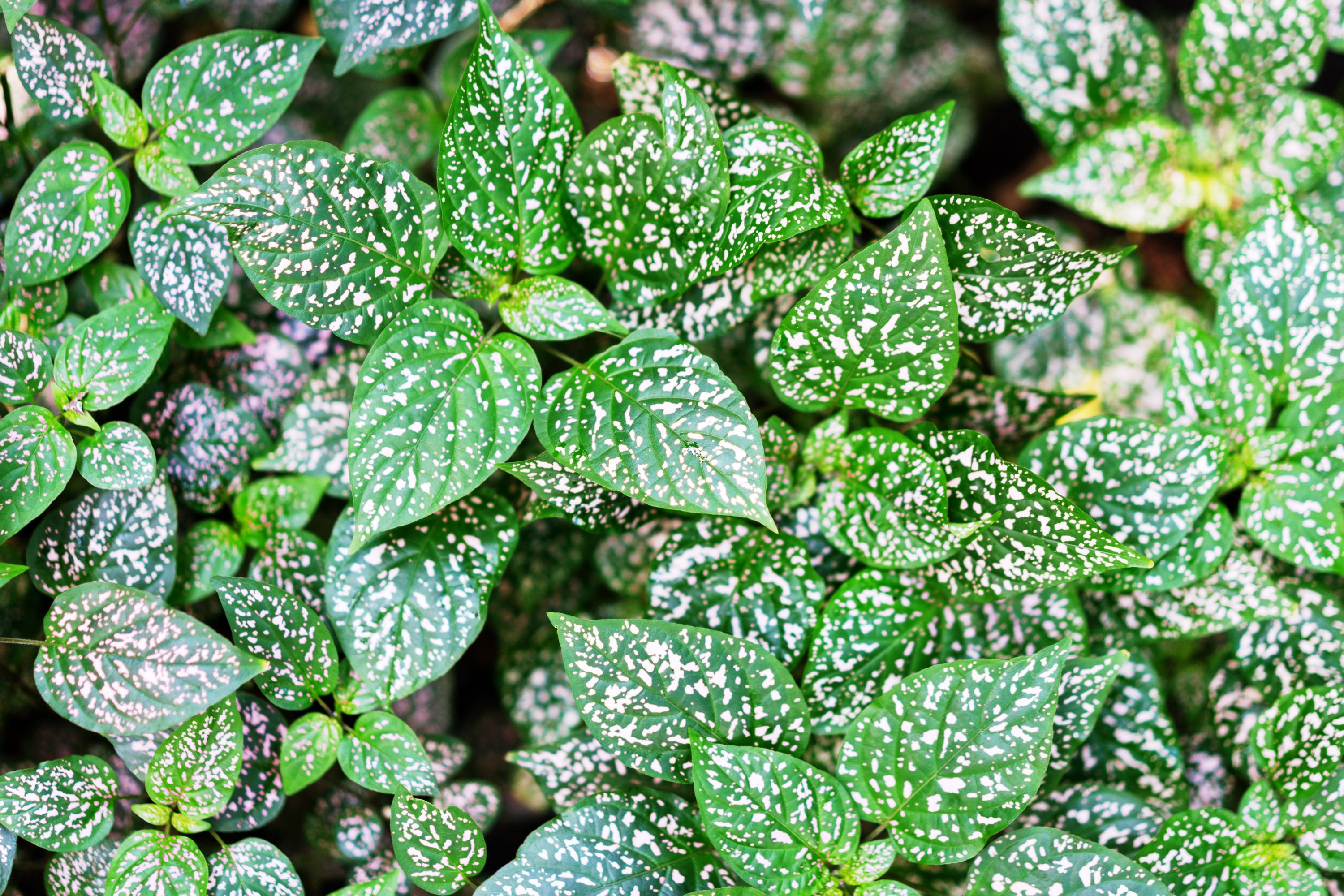Polka dot plant
(Hypoestes phyllostachya)

Description
Hypoestes phyllostachya, commonly known as the Polka Dot Plant, is a tropical plant native to Madagascar that is popular among gardeners and plant enthusiasts for its attractive foliage. It is a member of the Acanthaceae family, which includes more than 4,000 species of flowering plants. Description The Polka Dot Plant is a low-growing, bushy plant that typically reaches a height of 12 inches (30 cm) and a spread of 8 inches (20 cm). It has a shallow root system and produces numerous small, pink or white flowers in clusters. However, the plant is primarily grown for its colorful, variegated leaves. The leaves of the Polka Dot Plant are soft and hairy, with a characteristic pattern of pink or red spots on a light green background. The spots may also be white, rose, or salmon, depending on the cultivar. The leaves are oval or oblong, and measure about 1-2 inches (2.5-5 cm) in length. They grow on short petioles that attach directly to the stem, and are arranged opposite each other along the stem. Cultivation The Polka Dot Plant is a relatively easy plant to grow, and is often used as a houseplant or as an outdoor plant in warm, humid climates. It prefers bright, indirect light, but can tolerate some shade. Direct sunlight can cause the leaves to fade or burn. The plant should be kept in a warm, humid environment, with a temperature range of 60-85°F (16-29°C). It should be watered regularly, but not over-watered, as this can cause root rot. The soil should be kept moist, but not waterlogged. Fertilizer can be applied every two weeks during the growing season, from spring to fall. Propagation The Polka Dot Plant can be propagated by stem cuttings or by seed. Stem cuttings should be taken from the top of the plant, and should be about 3-4 inches (7.5-10 cm) in length. The cuttings should be rooted in moist soil, and should be kept warm and humid until new growth appears. Seeds should be sown in a well-draining soil mix, and should be kept warm and moist until they germinate. Seedlings should be transplanted into individual pots once they are large enough to handle. Uses The Polka Dot Plant is primarily grown for its ornamental value, as it adds a pop of color to any room or garden. It is often used in mixed containers or as a border plant in flower beds. The leaves are also used in floral arrangements, and can be dried and preserved for use in crafts or decorations. In addition to its decorative uses, the Polka Dot Plant has some medicinal properties. It has been used in traditional medicine in Madagascar to treat a variety of ailments, including fever, diarrhea, and respiratory infections. The leaves contain several compounds that have been found to have antimicrobial, anti-inflammatory, and antioxidant properties. In conclusion, the Hypoestes phyllostachya, or Polka Dot Plant, is a charming and easy-to-care-for plant that can add a touch of color and whimsy to any garden or indoor space. With its variegated leaves and small, delicate flowers, it is a popular choice among plant enthusiasts and gardeners alike. Its versatility and unique appearance make it a valuable addition to any collection. Care The polka dot plant requires regular care to keep it healthy and looking its best. Here are some tips to keep in mind: Watering: The plant prefers consistently moist soil, so water it regularly, but be careful not to overwater. Watering once a week should be sufficient, but adjust the frequency depending on the plant's specific needs. Fertilization: The plant benefits from regular fertilization during the growing season with a balanced, water-soluble fertilizer. Fertilize every 2-3 weeks during the growing season and reduce or stop fertilization during the winter months. Pruning: Prune the plant regularly to encourage bushy growth and remove any yellow or dead leaves. You can also pinch back the tips of the stems to encourage branching. Repotting: The plant should be repotted every 1-2 years, or when it outgrows its current pot. Use a well-draining potting mix and choose a pot that is only slightly larger than the current one. Conservation Status As of my knowledge cutoff date of September 2021, the conservation status of Hypoestes phyllostachya has not been formally assessed by the International Union for Conservation of Nature (IUCN). However, as a popular and widely cultivated ornamental plant, it is not currently considered to be at risk of extinction in the wild. That being said, it is important to note that habitat loss and degradation, as well as the collection of wild specimens for horticultural purposes, can have a negative impact on the populations of wild plant species. Therefore, it is always advisable to use plant material from cultivated sources and to avoid purchasing or collecting plants that have been illegally harvested from the wild. Conclusion Hypoestes phyllostachya, or Polka Dot Plant, is a charming and easy-to-care-for plant that can add a touch of color and whimsy to any garden or indoor space. With its variegated leaves and small, delicate flowers, it is a popular choice among plant enthusiasts and gardeners alike. Its versatility and unique appearance make it a valuable addition to any collection.
Taxonomic tree:







